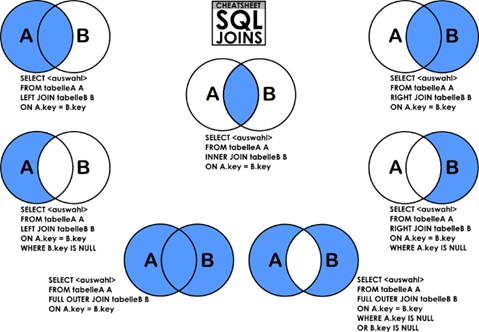Understanding Database Schema Structure for Beginners
A database is an organized collection of data that allows multiple users to store, retrieve, and manage information efficiently. It is typically used in computer systems and supports applications by maintaining data consistency and structure. Databases are designed to store information in a structured format, enabling quick access and effective data usage. A schema serves as the blueprint of a database, defining its structure and rules. Understanding schemas, even at a beginner level, helps one grasp how data is organized and interconnected. It forms the foundation for data modeling, query building, and maintenance, and prevents potential issues caused by poor structural planning. Beginners often confuse terms like schema and table, or oversimplify a database as just a storage space. They may also struggle to distinguish between fields, columns, and rows, leading to errors in query writing. Clarifying these concepts early on is essential to avoid mistakes in practical database work. What is a Schema: Definition and Role Definition of Schema and Its Components A schema is a blueprint that defines the structure of a database. It includes elements such as tables, fields, data types, and constraints. In simple terms, a schema outlines how data is stored, organized, and related within the database. It enables developers and database designers to manage data consistently and accurately by providing a clear view of the entire database layout. Relationship Between Schema, Tables, Fields, and Data Types A schema is primarily composed of tables, which contain fields, each assigned a specific data type. For example, a user table may include fields like name, age, and signup date. This structure ensures that each piece of data follows a defined format, allowing for consistency and data integrity. The schema dictates how tables relate to one another and how data is validated. Importance of Schema in Relational Databases In relational database systems, multiple tables interact through defined relationships. A poorly designed schema can lead to data redundancy, integrity issues, and performance problems. A well-defined schema is essential for preventing such issues and maintaining efficient data operations. Especially in environments where many users or systems access data concurrently, having a robust schema is critical for stable and reliable database management. Schema Design Approach: Practical Guide for Beginners Requirements Analysis and Domain Modeling Before designing a schema, it is essential to identify what kind of data the system needs to handle. This involves gathering user requirements and defining entities and their relationships. Based on this analysis, a domain model can be created, serving as the foundation for the database structure. Basic Concepts of Normalization with Step-by-Step Examples Normalization is the process of organizing tables to reduce data redundancy and ensure consistency. First Normal Form eliminates repeating groups, Second Normal Form removes partial dependencies, and Third Normal Form eliminates transitive dependencies. These steps help build a clear, maintainable schema. Common Mistakes and Patterns to Avoid in Schema Design Beginners often make the mistake of putting all data into one table or ignoring relationships between entities. Such practices hinder scalability and system performance. Another common issue is designing schemas without setting proper keys, which can lead to data integrity problems. Careful planning is crucial. Schema Changes and Maintenance: Practical Tips Why schema changes are difficult Schemas define the structure of a database, and once deployed, modifying them can have widespread effects. Preserving existing data while incorporating new structures requires thorough testing and validation. Changes often necessitate updates to application code or queries. Moreover, applying schema changes in a live environment can be disruptive, so operational stability must be carefully maintained. Overview of schema version control and migration Schema version control systematically tracks structural changes in a database. Tools integrated with Git allow teams to document modifications as migration scripts. These scripts can be executed across development, testing, and production environments in a controlled manner. This facilitates collaboration, traceability, and the ability to roll back in case of issues. Schema refactoring examples in practice In real-world scenarios, schema refactoring often involves optimizing table structures or eliminating redundancy. A common case is separating address information into its own table for reuse, or removing unnecessary columns to improve query performance. Such changes should be applied gradually, with a focus on preserving data integrity throughout the process. The Benefits of Understanding Database Schemas Understanding schema structures enhances a developer's capabiliti

A database is an organized collection of data that allows multiple users to store, retrieve, and manage information efficiently. It is typically used in computer systems and supports applications by maintaining data consistency and structure. Databases are designed to store information in a structured format, enabling quick access and effective data usage.
A schema serves as the blueprint of a database, defining its structure and rules. Understanding schemas, even at a beginner level, helps one grasp how data is organized and interconnected. It forms the foundation for data modeling, query building, and maintenance, and prevents potential issues caused by poor structural planning.
Beginners often confuse terms like schema and table, or oversimplify a database as just a storage space. They may also struggle to distinguish between fields, columns, and rows, leading to errors in query writing. Clarifying these concepts early on is essential to avoid mistakes in practical database work.
What is a Schema: Definition and Role

Definition of Schema and Its Components
A schema is a blueprint that defines the structure of a database. It includes elements such as tables, fields, data types, and constraints. In simple terms, a schema outlines how data is stored, organized, and related within the database. It enables developers and database designers to manage data consistently and accurately by providing a clear view of the entire database layout.
Relationship Between Schema, Tables, Fields, and Data Types
A schema is primarily composed of tables, which contain fields, each assigned a specific data type. For example, a user table may include fields like name, age, and signup date. This structure ensures that each piece of data follows a defined format, allowing for consistency and data integrity. The schema dictates how tables relate to one another and how data is validated.
Importance of Schema in Relational Databases
In relational database systems, multiple tables interact through defined relationships. A poorly designed schema can lead to data redundancy, integrity issues, and performance problems. A well-defined schema is essential for preventing such issues and maintaining efficient data operations. Especially in environments where many users or systems access data concurrently, having a robust schema is critical for stable and reliable database management.
Schema Design Approach: Practical Guide for Beginners

Requirements Analysis and Domain Modeling
Before designing a schema, it is essential to identify what kind of data the system needs to handle. This involves gathering user requirements and defining entities and their relationships. Based on this analysis, a domain model can be created, serving as the foundation for the database structure.
Basic Concepts of Normalization with Step-by-Step Examples
Normalization is the process of organizing tables to reduce data redundancy and ensure consistency. First Normal Form eliminates repeating groups, Second Normal Form removes partial dependencies, and Third Normal Form eliminates transitive dependencies. These steps help build a clear, maintainable schema.
Common Mistakes and Patterns to Avoid in Schema Design
Beginners often make the mistake of putting all data into one table or ignoring relationships between entities. Such practices hinder scalability and system performance. Another common issue is designing schemas without setting proper keys, which can lead to data integrity problems. Careful planning is crucial.
Schema Changes and Maintenance: Practical Tips

Why schema changes are difficult
Schemas define the structure of a database, and once deployed, modifying them can have widespread effects. Preserving existing data while incorporating new structures requires thorough testing and validation. Changes often necessitate updates to application code or queries. Moreover, applying schema changes in a live environment can be disruptive, so operational stability must be carefully maintained.
Overview of schema version control and migration
Schema version control systematically tracks structural changes in a database. Tools integrated with Git allow teams to document modifications as migration scripts. These scripts can be executed across development, testing, and production environments in a controlled manner. This facilitates collaboration, traceability, and the ability to roll back in case of issues.
Schema refactoring examples in practice
In real-world scenarios, schema refactoring often involves optimizing table structures or eliminating redundancy. A common case is separating address information into its own table for reuse, or removing unnecessary columns to improve query performance. Such changes should be applied gradually, with a focus on preserving data integrity throughout the process.
The Benefits of Understanding Database Schemas

Understanding schema structures enhances a developer's capabilities beyond basic coding. It allows for designing systems that are logically sound and scalable by providing insights into how data is organized and flows within the application. Moreover, this knowledge improves communication within teams and contributes to clearer, more effective documentation.
The performance of a database is largely influenced by its structure. A well-designed schema reduces redundancy, ensures data consistency, and simplifies maintenance. For a more stable and well-supported solution, consider visiting 프리또. It also improves the efficiency of common operations such as queries and updates, ultimately boosting the performance of the entire system.

















































































































































































![[The AI Show Episode 148]: Microsoft’s Quiet AI Layoffs, US Copyright Office’s Bombshell AI Guidance, 2025 State of Marketing AI Report, and OpenAI Codex](https://www.marketingaiinstitute.com/hubfs/ep%20148%20cover%20%281%29.png)


![[The AI Show Episode 146]: Rise of “AI-First” Companies, AI Job Disruption, GPT-4o Update Gets Rolled Back, How Big Consulting Firms Use AI, and Meta AI App](https://www.marketingaiinstitute.com/hubfs/ep%20146%20cover.png)




































































































































































































































































_Prostock-studio_Alamy.jpg?width=1280&auto=webp&quality=80&disable=upscale#)














































































































































![Mobile Legends: Bang Bang [MLBB] Free Redeem Codes May 2025](https://www.talkandroid.com/wp-content/uploads/2024/07/Screenshot_20240704-093036_Mobile-Legends-Bang-Bang.jpg)








































